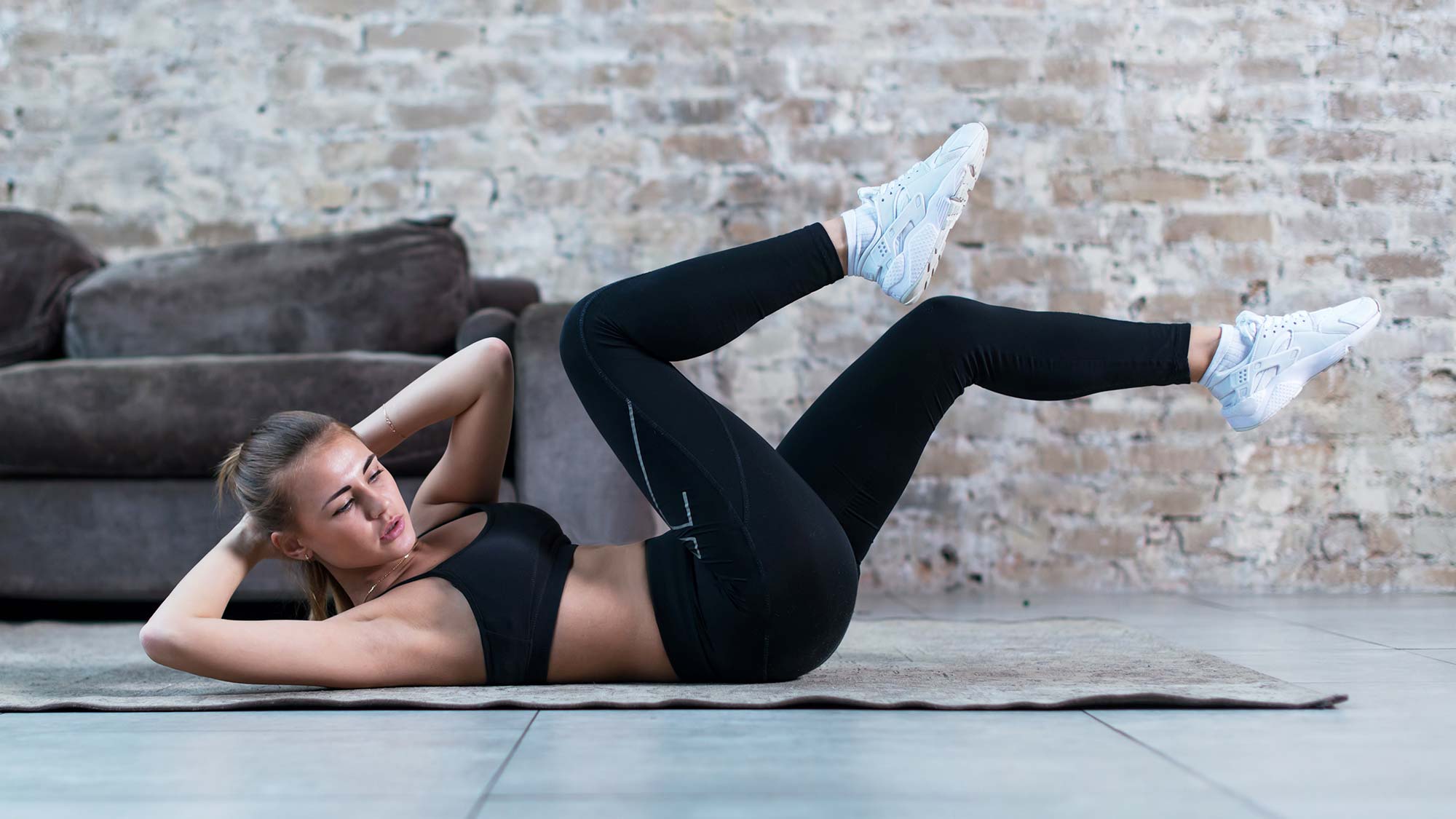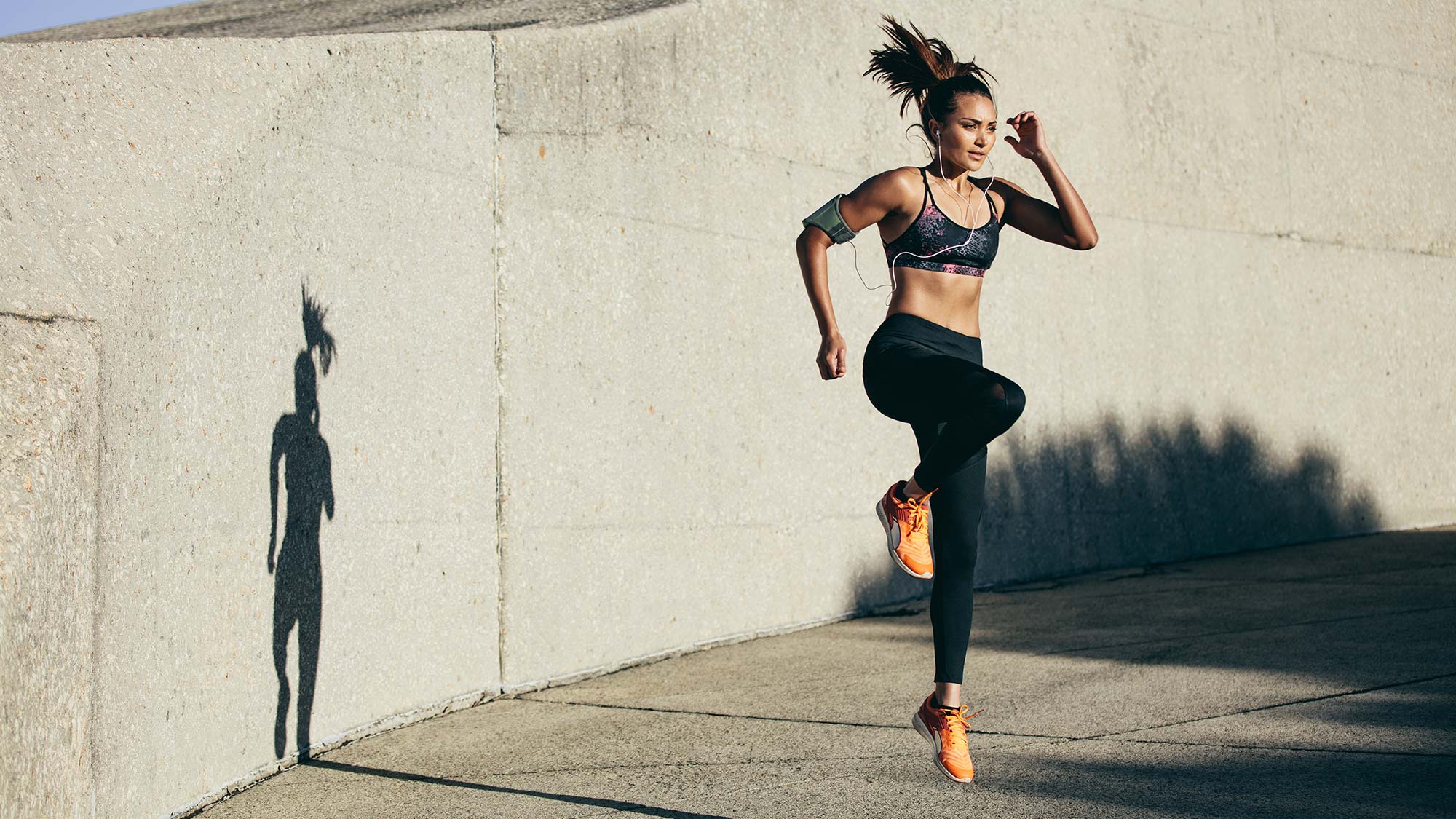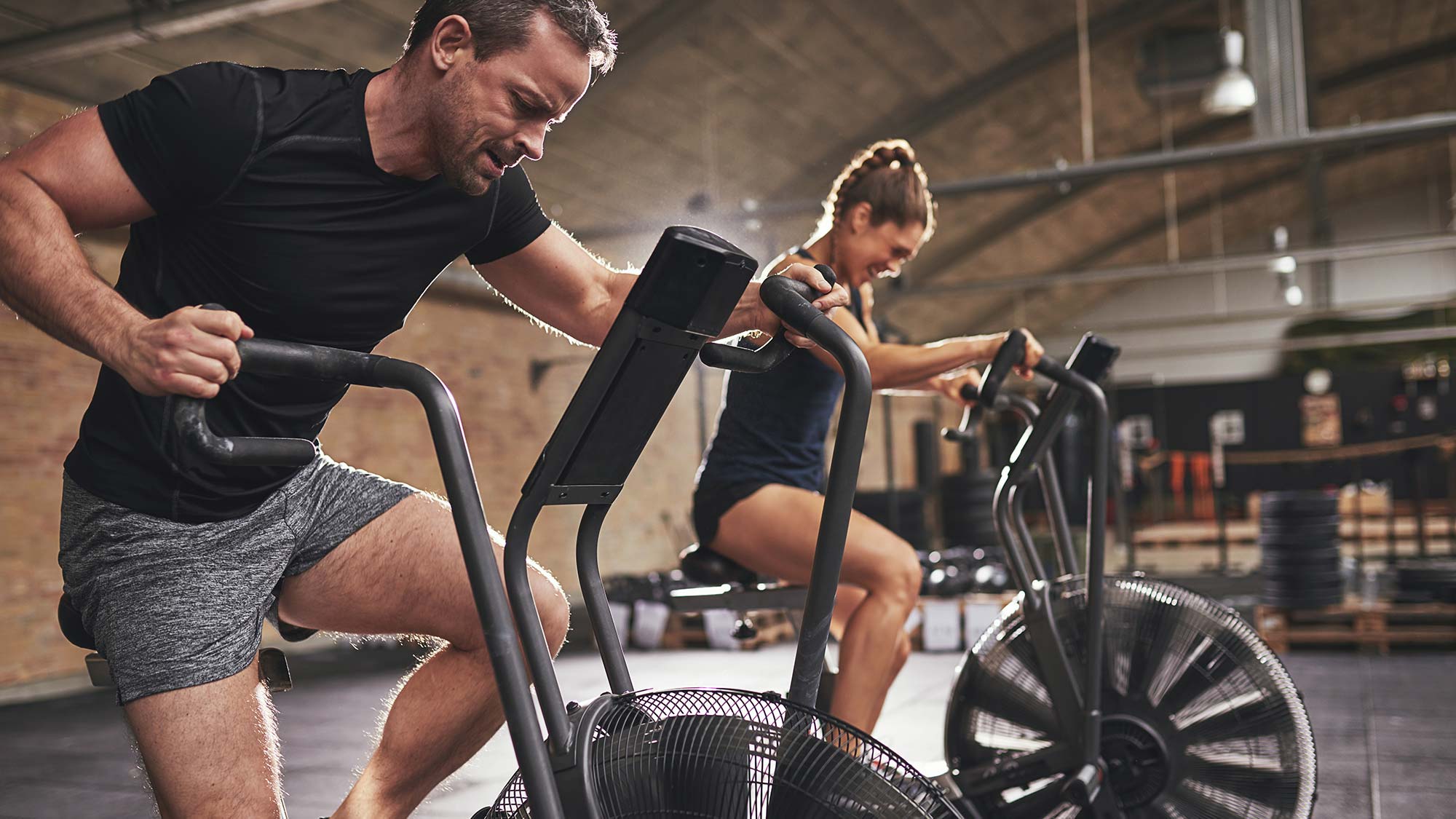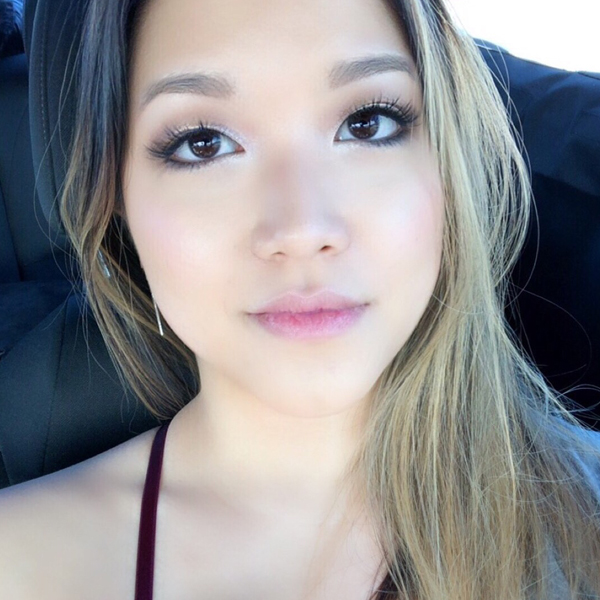How to lose belly fat — quick tips that work
Losing belly fat is all about finding a plan for diet and exercise and sticking with it

The first rule of losing belly fat is — and I'm sure you've heard this before — you can't just lose belly fat. "Spot reduction," or losing weight from a specific area and only that area…isn't a thing. That's just not how weight loss works.
And it's especially not a thing for belly fat: a study from Southern Illinois University Edwardsville in Illinois found that six weeks of abdominal training alone was "not sufficient to reduce abdominal subcutaneous fat and other measures of body composition."
So, if you're looking to lose belly fat, you're actually looking to just lose fat from all over your body. And that's not a bad thing! But it's also not the "easier" abs-only diet and exercise plan you were hoping for. Here’s how to lose belly fat the right way.
How to lose belly fat: Quick tips
- Weight loss is almost entirely about diet. Find a diet — any diet! — that you can stick to, long-term.
- Cardio exercise is key, but it doesn't have to be traditional cardio: Try high-intensity interval training (HIIT) if you'd rather not jog, or take a look at these five cardio exercises that burn more calories than running.
- Ab workouts won't help you lose belly fat (or any fat), but they will build muscle. If you're aiming for visible ab muscles, don't skip the ab workouts! Take a look at the best ab workouts that are completely free here.
How to lose belly fat: Choose a diet that works for you
There's a saying "abs are made in the kitchen." The underlying meaning is that diet is more important than exercise when it comes to getting a six-pack. Well, I have some good news for you: It's a lie — kind of.
A better mantra that I've seen tossed around is, "abs are made in the gym, but revealed in the kitchen." So if you were hoping that you could work(out) hard and play harder, sorry. Because we're talking about losing fat, not building muscle — and the majority of weight loss is attained through diet, not exercise.

One study followed 40 overweight and obese women through a 12-week intervention — one group only dieted, and the other group dieted and did abdominal resistance training — and found that while both groups lost weight, there was no significant difference between the two groups in the amount of weight lost or any of the other variables, which included abdominal subcutaneous fat, waist circumference, hip circumference, body mass index, body fat percentage, and skin fold thickness.
Unfortunately, there's no perfect diet that I can give you that will just zap fat away and leave you looking like a fitness model by summer. The good news is that most diets work (initially, at least).
Diets are designed to make you eat less, so most diets are going to work for you physically. It's not the diet that's the problem, it's sticking to it. To lose fat — and keep it off — you need to find a diet that works for you psychologically. For that reason, I would advise against jumping into any fad diets — especially ones that are restrictive for no real reason.
If you just happen to love everything about the Paleo diet, that's awesome and you should stick to it, but let's not pretend that cavemen were walking around looking like Men's Health cover models. Don't get me wrong, there is definitely a lot of diet advice that is science-based, and a lot of fad diets just use hype to make you feel better about the boring stuff, like eating more vegetables, cutting out added sugar, and hitting the right macronutrients.
Regardless of the diet you choose, make sure you're getting all your vitamins, because vitamin deficiencies can cause cravings (and may even make your body resistant to fat loss). If there's one thing modern non-caveman food does tend to have, it's fortification to correct against nutrient deficiency in the population.
How to lose belly fat: Exercise
Cardio is everything: this study from Duke University in North Carolina found that while resistance training (strength training) is good for gaining lean mass (muscle), aerobic training (cardio) is really what helps you lose weight (and fat). This doesn't mean you shouldn't do strength training — remember, abs are built in the gym — but for fat loss, focus on cardio.

However, if you want to work on defined ab muscles you’ll need to work them out, too. Check out this ab workout that is better than crunches or sit-ups, and one of the best ab exercises when it comes to sculpting a slimmer waistline.
1. Find your Maximum Heart Rate (MHR) by subtracting your age from 220.
2. Find your Resting Heart Rate (RHR) by checking your pulse while you're resting. To do this, lie down for about 15 minutes and then place two fingers (not your thumb) on the inside of the opposite wrist (below your thumb) to feel your pulse. Count the beats for 15 seconds and then multiply that number by 4 to get the beats per minute (bpm). A normal adult RHR is between 60 and 100 bpm.
3. Use the Karvonen formula to determine your Target Heart Rate (THR):
THR = [(MHR - RHR)] x %Intensity] + RHR
I'll use myself as an example: I'm 34, so my MHR is 186. I just took my pulse for 15 seconds and counted 16 beats, so my RHR is 64.
142.08 = [(186 - 64) x 0.64] + 64
156.72 = [(186 - 64) x 0.76] + 64
It doesn't matter what type of cardio you do, as long as you do it. That said, a study from the University of Macau in China found that while both moderate-intensity exercise and high-intensity interval training (HIIT) will improve your fitness, HIIT is more enjoyable and time-efficient. (Although I personally agree with this opinion, this does kind of seem like an opinion.) The CDC recommends adults get at least 150 minutes of moderate-intensity physical activity per week, or 75 minutes of high-intensity physical activity.
So, what does that even mean?
According to the CDC, moderate-intensity aerobic exercise should put you between 64 and 76 percent of your maximum heart rate, while high-intensity exercise should put you between 77 and 93 percent of your maximum heart rate. Luckily, it's not too difficult to estimate what that should be, using the Karvonen formula (which adjusts slightly for your resting heart rate). Many of the best fitness trackers can also calculate these figures for you, too.
I try to keep my heart rate between 142 and 157 bpm for moderate-intensity exercise.
As for the type of cardio, this is like dieting: Do what works for you. Running, hiking, cycling, even briskly walking around your neighborhood are all COVID-friendly activities. If you choose the moderate-intensity route, aim for 30 minutes of exercise five days a week.
If you'd rather stay indoors and try your luck with HIIT, there are lots of options you can follow along (for free) on platforms like Instagram Live. Most of these workouts are going to be around 25 - 30 minutes, so aim for three times a week.
How to lose belly fat: Workouts to try
I'll get you started with some of my favorites:
- Rumble Boxing - HIIT workout that combines boxing and strength training
- Barry's Bootcamp and Basecamp Fitness - Bootcamp and HIIT workouts that are mostly equipment-free
- Looking for home workouts? - We've found this Joe Wick's dumbbell workout, as well as these resistance band arm exercises that can help you get a workout with weights.
How to lose belly fat: The bottom line
There's no magic trick to losing belly fat (or any fat for that matter). But the good news is that losing weight, building muscle, and looking like the best version of yourself isn't a crazy pipe-dream for non-fitness models. There’s just a couple of things to remember on your journey to a six-pack:
First, losing weight really is almost entirely about diet — and this is something to keep in mind when you're coming up with a workout schedule. People often overeat because cardio makes them insatiably hungry, or people end up abandoning their diet in favor of ordering fast food because they're too exhausted to cook. So remember: While it helps to work out — everyone should get some physical exercise — if you're struggling to find a balance, just focus on diet.
The second, and perhaps more important, thing to keep in mind is this: Fitness models, body builders, and even that decently-ripped guy you occasionally see at the gym do not always look that good. Bodybuilders, for example, spend about two weeks before a contest dramatically reducing their water intake, so what you might see as extremely low body fat is actually a combo of extremely low body fat, dehydration, and several other factors. So keep your expectations realistic.
Get healthy and in shape with our other fitness guides:
Best treadmills | Best exercise bikes | Best home gym equipment | Best workout apps | Best running apps | Best yoga mats |Best fitness trackers | Best sports watches
Sign up to get the BEST of Tom's Guide direct to your inbox.
Get instant access to breaking news, the hottest reviews, great deals and helpful tips.
Sarah is a hardware enthusiast and geeky dilettante who has been building computers since she discovered it was easier to move them across the world — she grew up in Tokyo — if they were in pieces. She's currently senior editor at our sister site Tom's Hardware and is best-known for trying to justify ridiculous multi-monitor setups, dramatically lowering the temperature of her entire apartment to cool overheating components, typing just to hear the sound of her keyboard, and playing video games all day "for work." She's written about everything from tech to fitness to sex and relationships, and you can find more of her work in PCWorld, Macworld, TechHive, CNET, Gizmodo, PC Gamer, Men's Health, Men's Fitness, SHAPE, Cosmopolitan, and just about everywhere else. In addition to hardware, she also loves working out, public libraries, marine biology, word games, and salads. Her favorite Star Wars character is a toss-up between the Sarlacc and Jabba the Hutt.

